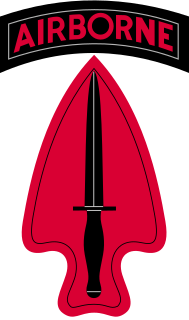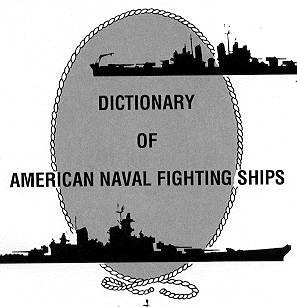
The United States Fleet Forces Command (USFF) is a service component command of the United States Navy that provides naval forces to a wide variety of U.S. forces. The naval resources may be allocated to Combatant Commanders such as United States Northern Command (USNORTHCOM) under the authority of the Secretary of Defense. Originally formed as United States Atlantic Fleet (USLANTFLT) in 1906, it has been an integral part of the defense of the United States of America since the early 20th century. In 2002, the Fleet comprised over 118,000 Navy and Marine Corps personnel serving on 186 ships and in 1,300 aircraft, with an area of responsibility ranging over most of the Atlantic Ocean from the North Pole to the South Pole, the Caribbean Sea, Gulf of Mexico, and the waters of the Pacific Ocean along the coasts of Central and South America. The command is based at Naval Support Activity Hampton Roads in Norfolk, Virginia and is the navy's service component to U.S. Northern Command and is a supporting command under the U.S. Strategic Command.

The Sixth Fleet is a numbered fleet of the United States Navy operating as part of United States Naval Forces Europe. The Sixth Fleet is headquartered at Naval Support Activity Naples, Italy. The officially stated mission of the Sixth Fleet in 2011 is that it "conducts the full range of Maritime Operations and Theater Security Cooperation missions, in concert with coalition, joint, interagency, and other parties, in order to advance security and stability in Europe and Africa." The current commander of the Sixth Fleet is Vice Admiral Lisa M. Franchetti.

The 1st Special Forces Operational Detachment-Delta, commonly referred to as Delta Force, Combat Applications Group (CAG), "The Unit", Army Compartmented Element (ACE), or within JSOC as Task Force Green, is an elite special mission unit of the United States Army, under operational control of the Joint Special Operations Command. The unit is tasked with specialized missions primarily involving hostage rescue and counter-terrorism, as well as direct action and special reconnaissance against high-value targets. Delta Force and its maritime counterpart, the U.S. Navy's SEAL Team Six are the U.S. military's primary counterterrorism units. Delta Force and DEVGRU perform the most complex, classified, and dangerous missions in the U.S. military, as directed by the U.S. National Command Authority.

The Seventh Fleet is a numbered fleet of the United States Navy. It is headquartered at U.S. Fleet Activities Yokosuka, in Yokosuka, Kanagawa Prefecture, Japan. It is part of the United States Pacific Fleet. At present, it is the largest of the forward-deployed U.S. fleets, with 60 to 70 ships, 300 aircraft and 40,000 Navy and Marine Corps personnel. Its principal responsibilities are to provide joint command in natural disaster or military operations and operational command of all naval forces in the region.
An executive officer (CCE) is generally a person responsible for running an organization, although the exact nature of the role varies depending on the organization. In many militaries, an executive officer, or "XO," is the second-in-command, reporting to the commanding officer. The XO is typically responsible for the management of day-to-day activities, freeing the commander to concentrate on strategy and planning the unit's next move.
A group is a military aviation unit, a component of military organization and a military formation. The terms group and wing differ significantly from one country to another, as well as between different branches of a national defence force.

A flotilla, or naval flotilla, is a formation of small warships that may be part of a larger fleet. A flotilla is usually composed of a homogeneous group of the same class of warship, such as frigates, destroyers, torpedo boats, submarines, gunboats, or minesweepers. Groups of larger warships are usually called squadrons, but similar units of non-capital ships may be called squadrons in some instances, and flotillas in others. Formations including more than one capital ships, e.g. men-of-war, battleships, and aircraft carriers, typically alongside smaller ships and support craft, are typically called fleets, each portion led by a capital ship being a squadron or task force.
A Naval Flight Officer (NFO) is a commissioned officer in the United States Navy or United States Marine Corps who specializes in airborne weapons and sensor systems. NFOs are not pilots per se, but they may perform many "co-pilot" functions, depending on the type of aircraft. Until 1966, their duties were performed by both commissioned officer and senior enlisted naval aviation observers (NAO).
United States military seniority is the method by which the United States Armed Forces determines precedence among commissioned officers, in particular those who hold the same rank. Seniority is used to determine assignments, tactical commands, promotions and general courtesy. To a lesser extent, historical seniority is used to recognize status of honor given to early United States military leaders such as inaugural holders of certain ranks or those officers who served as leadership during major wars and armed conflicts.
Commodore was an early title and later a rank in the United States Navy, United States Coast Guard and the Confederate States Navy. For over two centuries, the designation has been given varying levels of authority and formality.

The II Marine Expeditionary Force is a Marine Air-Ground Task Force consisting of ground, air and logistics forces capable of projecting offensive combat power ashore while sustaining itself in combat without external assistance for a period of 60 days. The II Marine Expeditionary Force is commanded by a Lieutenant General, who serves under U.S. Marine Corps Forces Command, providing Marine fighting formations and units to European Command, Central Command and Southern Command.
A squadron, or naval squadron, is a significant group of warships which is nonetheless considered too small to be designated a fleet. A squadron is typically a part of a fleet. Between different navies there are no clear defining parameters to distinguish a squadron from a fleet, and the size and strength of a naval squadron varies greatly according to the country and time period. Groups of small warships, or small groups of major warships, might instead be designated flotillas by some navies according to their terminology. Since the size of a naval squadron varies greatly, the rank associated with command of a squadron also varies greatly.
Military organization or military organisation is the structuring of the armed forces of a state so as to offer such military capability as a national defense policy may require. In some countries paramilitary forces are included in a nation's armed forces, though not considered military. Armed forces that are not a part of military or paramilitary organizations, such as insurgent forces, often mimic military organizations, or use ad hoc structures, while formal military organization tends to use hierarchical forms.
Command and control or C2 is a "set of organizational and technical attributes and processes ... [that] employs human, physical, and information resources to solve problems and accomplish missions" to achieve the goals of an organization or enterprise, according to a 2015 definition by military scientists Marius Vassiliou, David S. Alberts and Jonathan R. Agre, The term often refers to a military system.
The structure of the United States Navy consists of four main bodies: the Office of the Secretary of the Navy, the Office of the Chief of Naval Operations, the operating forces, and the Shore Establishment.
Fleet Command is responsible for the command, operations, readiness, training and force generation of all ships, submarines, aircraft squadrons, diving teams, and shore establishments of the Royal Australian Navy. Fleet Command is headquartered at HMAS Kuttabul in Sydney, and is led by the Commander Australian Fleet (COMAUSFLT), also referred to as Fleet Commander Australia (FCAUST), which is a rear admiral (two-star) appointment.
Command by negation is a military command and control doctrine - a hybrid of command by direction and command by influence. Commonly found in the United States Navy, particularly in independent commands at sea, the doctrine is based on the idea of allowing individual officers to show their own initiative in executing actions, freeing up their superiors to focus on the bigger picture.

Naval Forces Vietnam was a command of the United States Navy, active from 1 April 1966 to 29 March 1973.

The organization of the Kriegsmarine refers to the operational and administrative structure of the German Navy from 1935 to 1945. Many of the organizational tenets of the Kriegsmarine were inherited from its predecessor the Reichsmarine. As World War II unfolded, the Kriegsmarine expanded to cover additional regions and responsibilities, most significant of which was the occupation of France and the Battle of the Atlantic.










